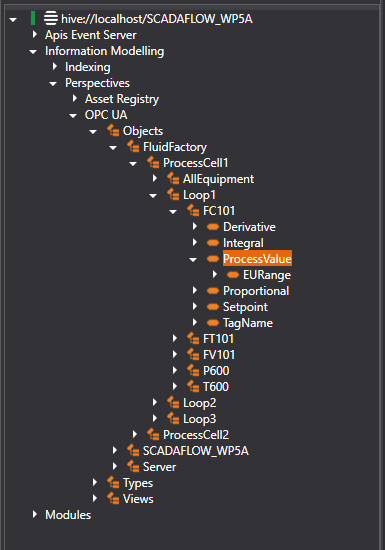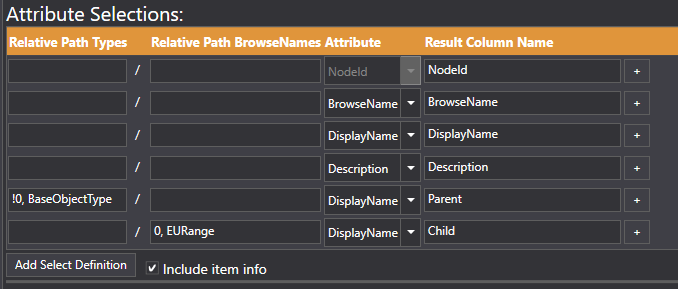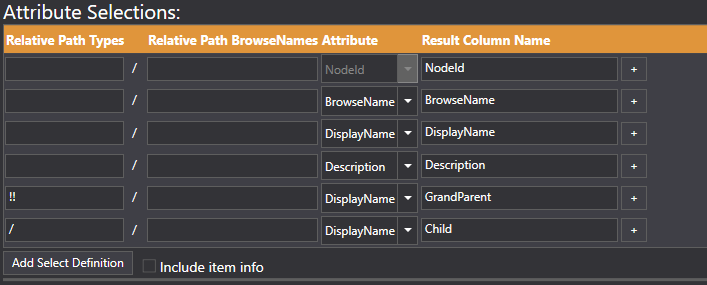Information structure traversal
You have to use Type and/or BrowseName traversal to get information on parent or child components relative to the variables.
In the example structure below, the marked variable "Processvalue" is incuded in the result of the variable query with base in "ProcessCell1".

We need to add two new selections to incude parent and child information to the resultset:

We first add an attribute selection that has "!0,BaseObjectType" in the "Relative Path Type". We uses ! to indicate that we want to go along hierarchy connections that are Inboundto the variable. The "0,BaseObjectType" is the BrowseName of the BaseObjectType, the base type of all object types in which in short means that we want to find any parents of any type.
The second line we add uses "0,EURange" in the "Relative Path BrowseNames" column. "0,EURange" means that the component below must have "0,EURange" as BrowseName.
There is always the BrowseName of both types and children that are used for traversal, not DisplayName.
We could add "/0,VariableType" to the "Relative Path Type" instead to indicate that we want info on any variable type that are along hierarchical connections that are Outbound from the variable.
Instead of using "!0,BaseObjectType" for inbound reverse traversal and "/0,BaseObjectType" for outbound traversal that acceps any type, use the short version: Just ! or /.
Create a type path to go several steps, for instance to find the grand parent: "!0,BaseObjectType!0,BaseObjectType" or in short "!!".
An example that is type agnostic that goes two steps along the inbound connections to find the grandparent, and one step along the outbound axis to find the children.

It is also possible to go a unknown number of steps along hierarchy connections that are inboundon the variable. Use the "!*" notation for this.
Here are some examples of traversal configurations:

Will traverse along inboundhierarchy connections until "1,SiteType" is found. If found, the Display Name is placed in the "Site" column in the result set.

Will traverse along inboundhierarchy connections until "1,SiteType" is found, then turn and step back to the "1,PlantType" that are a child of "1,SiteType". If found the Display Name is placed in the "Plant" column in the result set.